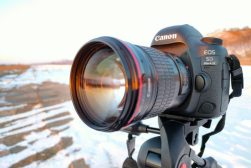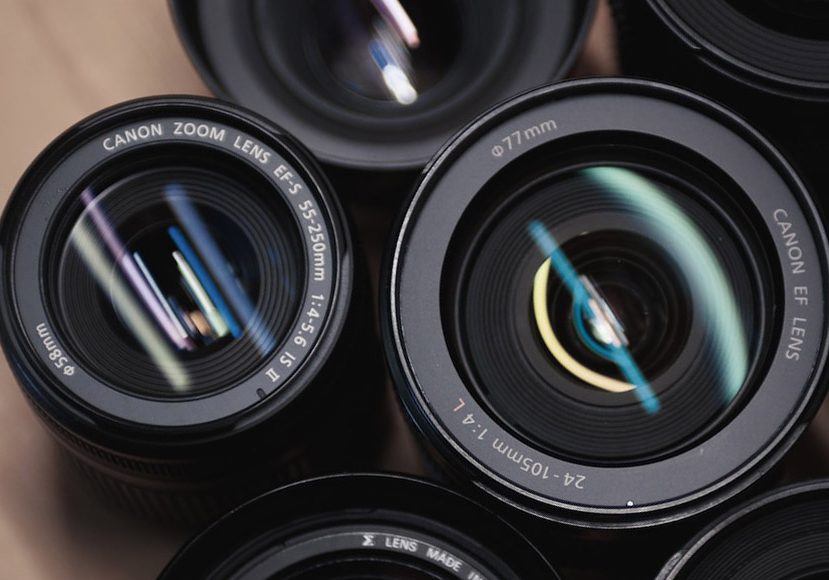
Canon EF vs EF-S Lenses (What’s The Difference?)
Learn about the differences between Canon EF vs EF-S lenses, their compatibility, pros and cons, and everything else in this in-depth guide.
Confused about Canon EF vs EF-S lenses? No wonder – too many acronyms will get anybody’s brain in a twist!
I remember when I first moved over to the Canon ecosystem and had no idea what all these different lenses were about.
Thankfully, it’s not so difficult once you get the hang of it.
In this guide to Canon EF-S vs EF lenses, we’ll clarify the differences and clear away any confusion.
Ready? Grab your EOS camera and let’s jump in.
Canon EF vs EF-S Lenses: What They Are
Navigating the world of Canon lenses can sometimes feel like deciphering a secret code. Central to this code are terms like EF and EF-S, which refer to the lens’s mount type.
But there’s more to it! These mount types also give away the type of image sensor they’re best suited for.
Canon DSLRs, up until now, have two variations on sensor types: full frame and the more compact APS-C, often referred to as crop sensor cameras.
So, let’s explore these two terms more fully.
What does EF-S mean on Canon lenses?
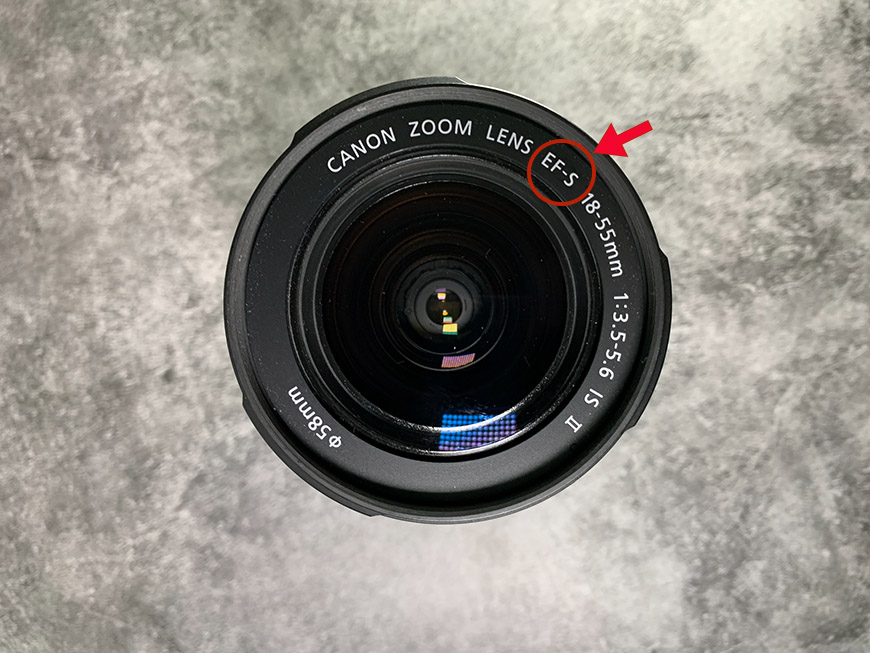
Credit: Sandro Widrig
The “EF-S” tag on a Canon lens stands for “Electro-Focus Short back focus.” That’s a bit of a mouthful, huh?
In simpler terms, it means these lenses are designed specifically for Canon DSLRs with APS-C sized sensors.
What’s unique about them? They have a smaller image circle that matches the sensor’s smaller size. This makes them lighter, more compact, and often friendlier on the wallet.
However, it also means they’re not made for full-frame Canon cameras.
So if you’ve got a Canon APS-C camera (aka, a crop sensor camera), like the Canon Rebel series, these lenses are tailored just for you!
What does EF stand for on Canon lenses?
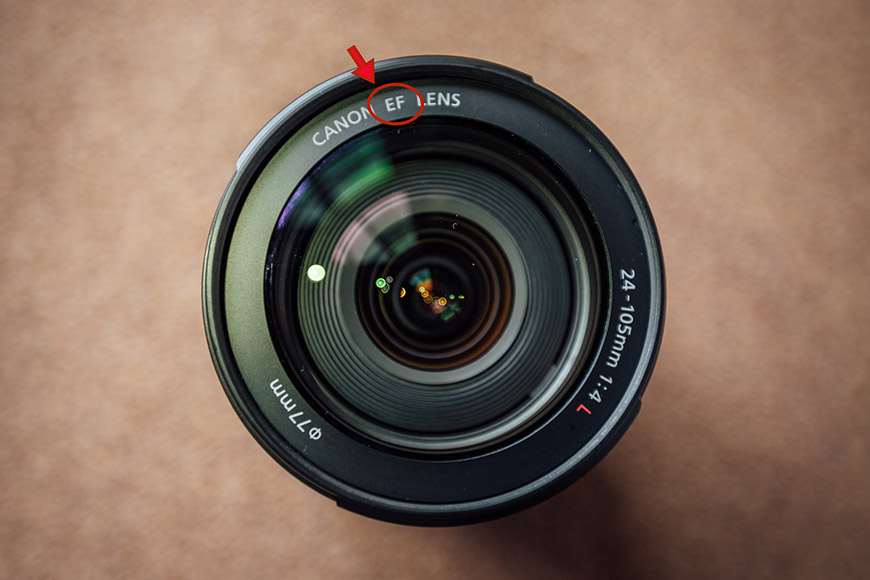
Credit: Ryan Warburton
The EF on Canon lenses is short for “Electro-Focus.”
These lenses were introduced by Canon in the late 1980s and were revolutionary for their time. Why? Because they were the first to have a fully electronic lens mount. No more mechanical linkages!
What’s cool about EF lenses is their compatibility. They fit both Canon’s full-frame and APS-C DSLRs.
They offer a broader range of options in terms of build and optics, catering to everyone from beginners to pros.
So, if you’re after versatility and future-proofing, EF lenses are where it’s at.
A Short History of EF-S and EF Lenses
Back in the day, when film cameras reigned supreme, Canon was already making waves with its FD mount system. As technology evolved and autofocus became the future, Canon saw an opportunity to innovate.
In 1987, they introduced the EF (Electro-Focus) lens mount, marking a departure from their previous FD mount. This was groundbreaking!
The EF mount was the first fully electronic interface, allowing lightning-fast autofocus speeds.
Fast forward a bit and digital photography began to rise in prominence. Canon developed two primary sensor types for its DSLRs: full frame and the smaller APS-C.
Recognizing the unique needs of these sensor sizes, especially the APS-C’s “crop factor,” Canon introduced the EF-S mount in 2003. These lenses were tailored for APS-C sensors, offering optimal performance and often a more affordable price point.
Throughout the years, both EF and EF-S lenses have seen numerous advancements, catering to photographers’ evolving needs and preferences.
While other mounts and systems have since been introduced (like the mirrorless RF mount), the legacy and influence of the EF and EF-S mounts remain undeniable.
Canon EF vs EF-S Lenses: The Key Differences
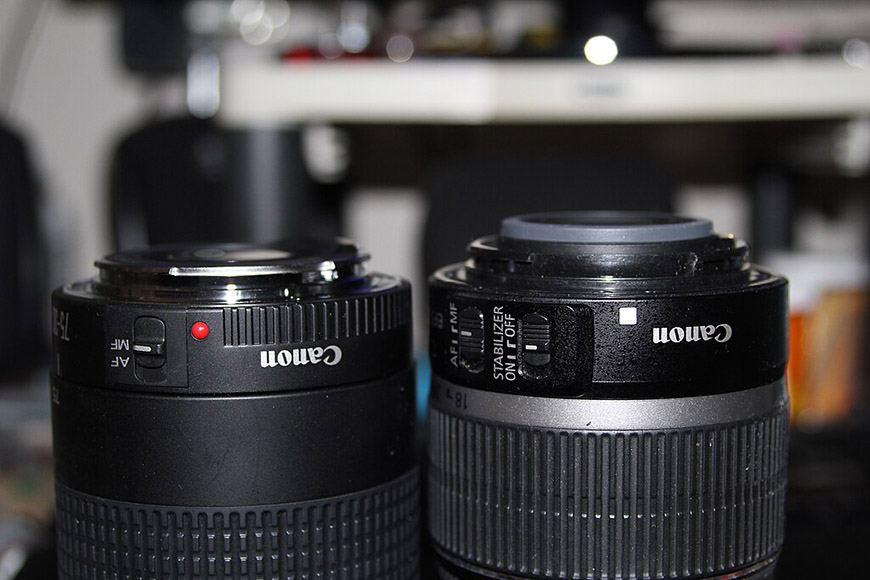
Canon EF and Canon EF-S lens mount compared. Credit: Hellbus, CC BY-SA 3.0, via Wikimedia Commons
Canon’s EF and EF-S lenses share some similarities, but there are also crucial differences that every photographer should be aware of.
Image Circle and Sensor Size
- EF Lenses: Designed for full-frame sensors, Canon EF lenses project a larger image circle, covering the entire surface of these bigger sensors.
- EF-S Lenses: Crafted for APS-C sensors, these lenses have a smaller image circle that matches the reduced size of the sensor. If you put them on a full-frame camera, you’d end up with a noticeable vignette or dark edges.
Physical Mount and Compatibility
- EF Lenses: Universally adaptable! EF lenses can mount on both full-frame and APS-C Canon DSLRs without a hitch.
- EF-S Lenses: More selective, these lenses are tailored for APS-C cameras. While they physically can fit some full-frame bodies, they’re not recommended for them due to the image circle limitation.
Build and Design
- EF Lenses: Generally, you’ll find a wider range of builds in the EF lineup, from consumer models to high-end professional-grade lenses, often distinguished by the coveted “L-series” badge.
- EF-S Lenses: These lenses typically lean towards consumer and enthusiast designs, prioritizing compactness and affordability.
Optical Performance
- EF Lenses: Offering lenses with top-tier optics and superior performance, especially in the L-series, the EF lineup caters to professionals demanding the best.
- EF-S Lenses: While they deliver excellent performance, especially for their price, Canon EF-S lenses might not always match the pinnacle of optical quality found in some EF counterparts.
Price and Target Market
- EF Lenses: Ranging from affordable to high-end, these lenses target a broader market, including professionals and serious hobbyists.
- EF-S Lenses: Typically more wallet-friendly, they’re perfect for beginners, enthusiasts, and anyone with a crop sensor camera looking for value without sacrificing too much quality.
Which Canon Lens Type Should You Choose? (EFS vs EF)
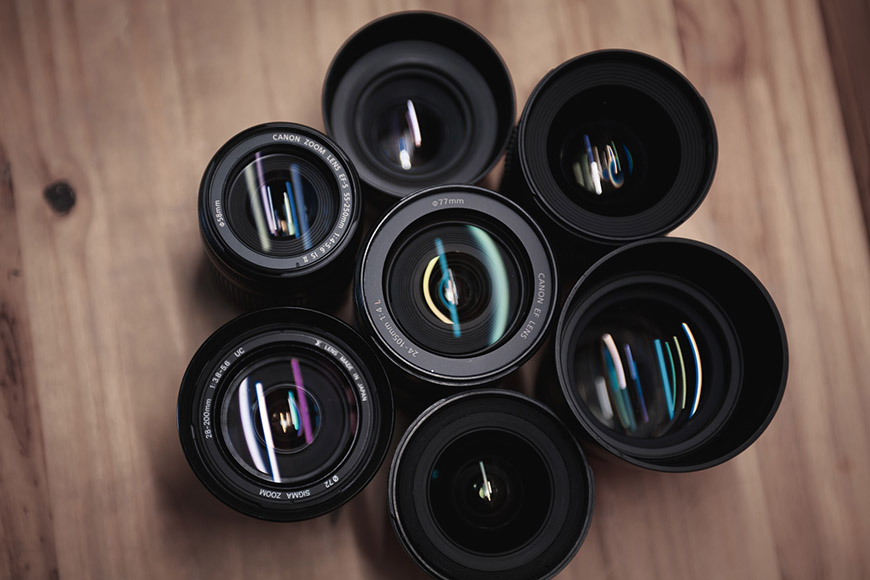
Credit: Hunter Moranville
When you’re about to splash out on a new lens, the decision between an EF lens or EF-S lens can seem daunting.
But a closer look at your needs, current gear, and photography style can provide clarity. Let’s break it down:
For Professional Photographers:
- Full Frame Camera Enthusiasts: If you’re wielding a full frame Canon camera, especially a high-end DSLR, then an EF lens is your go-to. Their larger image circle complements the bigger sensor size, ensuring sharp, high-quality images.
- Consideration of Focal Length: Remember, an EF lens on an APS-C camera will have a multiplied focal length due to the crop factor. For instance, a 50mm EF lens will act more like an 80mm on a cropped sensor.
For Hobbyists and Enthusiasts:
- Starting Out with a Canon DSLR: Many beginners start with a DSLR that comes paired with an EF-S kit lens. This combo is affordable and delivers great results for those learning the ropes.
- Future Upgrades: If you’re considering upgrading to a full frame camera in the future, investing in an EF lens now might be a wise choice. They’ll seamlessly transition with you to a new camera body when the time comes.
For Budget-Conscious Photographers:
- Value for Money: EF-S lenses generally offer good bang for your buck. The EF-S lens mount is tailored for the APS-C sensor size, ensuring you get the best performance out of your camera body without breaking the bank.
For Video Creators:
- Versatility Matters: Shooting video often requires a range of focal lengths. The Canon lens mount system, whether EF or EF-S, provides a plethora of options. If you’re on a budget, don’t overlook the EF-S lens range; some gems deliver exceptional video quality at a fraction of the cost of their full frame counterparts.
What are some popular Canon EF S Lenses?
Here are my 7 favorite Canon EF-S lenses:
- Canon EF-S 10-18mm f/4.5-5.6 IS STM
- An ultra-wide-angle zoom lens with image stabilization, perfect for landscape and architecture photography.
- Canon EF-S 17-55mm f/2.8 IS USM
- A versatile standard zoom lens with a constant f/2.8 aperture, suitable for low light and providing shallow depth of field.
- Canon EF-S 24mm f/2.8 STM “Pancake”
- A compact and lightweight prime lens offering a natural field of view close to the human eye. Great for everyday photography.
- Canon EF-S 55-250mm f/4-5.6 IS STM
- A telephoto zoom lens with image stabilization, suitable for wildlife and sports photography.
- Canon EF-S 60mm f/2.8 Macro USM
- A macro lens that allows close-up photography, suitable for capturing small subjects in great detail.
- Canon EF-S 18-135mm f/3.5-5.6 IS STM
- A versatile all-in-one zoom lens with a broad focal length range, making it a good option for travelers and those who prefer a single lens for multiple scenarios.
- Canon EF-S 15-85mm f/3.5-5.6 IS USM
- Another versatile zoom lens that covers a wide to telephoto range and offers image stabilization.
These lenses cater to a wide range of photographic needs, from landscape and travel to portrait and macro photography.
Canon EF vs EF-S Lenses: FAQs
Can Canon EF lenses be used on EF-S?
Yes! Any Canon EF lens can be mounted and used on EF-S camera bodies. Just keep in mind that there’ll be a crop factor to consider, altering the effective focal length of the lens.
Can you use an EF-S lens on an EF camera?
Technically, some EF-S lenses can physically fit on certain EF camera bodies. However, they’re not recommended for full-frame cameras. You’d likely encounter vignetting or a dark circle around your images due to the smaller image circle of EF-S lenses.
Has Canon discontinued EF lenses?
While Canon has shifted a significant focus towards its mirrorless RF lenses and mounts, to date, they haven’t fully discontinued EF lenses. However, their future releases and focus might lean more towards newer technology.
Can I use my EF lens on mirrorless?
Yes, you can! With the use of Canon’s EF to RF adapter, you can mount your EF lenses on Canon’s newer mirrorless camera bodies with the RF mount, preserving functionality and performance.
Is Canon EF the same as EOS?
Not quite. While they’re both Canon terms, “EF” refers to the type of lens mount, whereas “EOS” stands for “Electro-Optical System” and is the name for Canon’s series of SLR and later, DSLR cameras. Think of EOS as the camera system, and EF as a specific lens type within that system.








